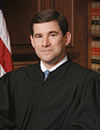The Wesleyan Media Project and the Center for Responsive Politics (CRP) have a new report out on independent spending in 2014 Senate races. Unfortunately, as with previous offerings from Wesleyan and CRP, the report suffers from a number of noteworthy flaws that cloud its analysis.
For starters, Wesleyan’s definition of political advertising is much broader than what the law recognizes. Wesleyan is not transparent about their data, so it’s impossible to say exactly how much this skews the overall figures reported. However, by counting certain ads as “political” which the law does not, they are certain to overstate the quantity of undisclosed spending.
For example, the report states, “[i]n Senate races, 57.5 percent of interest group airings were sponsored by 501c3, 501c4 and 501c6 groups, sometimes referred to as social welfare organizations, which are not required to disclose their donors.” As we’ve explained before, this kind of statement is either an accusation of illegal activity or an attempt to mislead readers. Of the three types of organizations mentioned, only 501(c)(4) groups are known as social welfare organizations, and 501(c)(3) groups (such as charities like the American Red Cross, or educational organizations like the Center for Competitive Politics) are prohibited by law from engaging in any political activity at all. The only way you can say that 501(c)(3) groups spend money on politics is by substituting your own subjective definition of political activity in place of legal standards. Wesleyan and CRP have a duty to explain this choice to their readers, but fail to do so.
Rather than educate readers about the distinctions between different kinds of groups and how they are regulated, Wesleyan and CRP lump them all together to inflate the amount of “undisclosed” spending they report. That may be a good strategy for drawing attention to their report, but it’s not good journalism. Look at how Wesleyan Media Project co-director Michael M. Franz spins the data:
“Although dark money ad airings make up a smaller proportion of all interest group advertising this cycle compared to last, the total volume of dark money airings has increased in U.S. Senate races from 106,137 at this point in 2012 to 124,281 so far in 2014.
“Dark money ads are on the rise in Senate races, meaning more people are seeing spots from groups they know little about,” said Michael M. Franz, co-director of the Wesleyan Media Project.” (Emphasis added).
That is a very odd way to describe the trend of so-called “dark money.” When total political spending increases, we should expect spending from groups who do not disclose their individual donors to increase as well. It’s like extending the baseball season by 100 games and being surprised when players finish the year with more home runs than usual. No one would claim “home runs are on the rise” as a result – everything is on the rise! So it is with political spending. The relevant statistic is that spending from groups who do not disclose donors is a smaller proportion of interest group advertising this cycle than last. That means “dark money” appears to be waning, not on the rise.
The question of how much political spending actually goes undisclosed is left unanswered in the report, but CRP has the data: so far in the 2014 election cycle, candidates have spent $449 million ($299,556,570 by House candidates and $149,723,709 by Senate candidates), parties have spent $762 million ($413,122,492 by the Democratic Party and $348,604,680 by the Republican Party), and independent expenditures have totaled over $216 million. That brings the total spending from groups who disclose their donors to $1.43 billion.
By contrast, how much has been spent by groups who do not disclose their donors? According to CRP, just over $50 million. In other words, just 3.5% of all spending in the 2014 elections has come from groups who do not disclose their donors. And this is what CRP deems “the darkest money election to date”? (Even compared to the last election cycle, that’s not true: in the 2012 election cycle, just under 4.3% of spending came from groups who do not disclose their donors.)
Once put into proper context, groups who do not disclose their donors don’t appear to be such a major force after all. Further, Wesleyan’s table of “Spending and Ad Totals of Top 20 Outside Groups” in Senate races reveals that most big spenders who do not disclose donors are familiar names like Americans for Prosperity, Crossroads GPS, and the U.S. Chamber of Commerce. The lesser-known groups in the table, like Let’s Get To Work and Illinois Freedom PAC, are 527s that must disclose all of their donors. Wesleyan and CRP focus only on the part of the story they want to push, emphasizing prominent groups who do not disclose while sidestepping contextual information that challenges their Chicken Little narrative.
However, despite its flaws, the report does provide one interesting tidbit. It notes that, “[i]n Florida, over half the airings [in gubernatorial races] are sponsored by groups, which compares to just 7.5 percent in Pennsylvania.” The disparity begs the question: why are donors in Florida flocking to independent groups while Pennsylvanians seem to prefer giving to candidates?
One possibility is contribution limits. In Pennsylvania, individuals, political parties, and PACs can contribute an unlimited amount to gubernatorial candidates (and state legislative candidates). In Florida, individual donors face a cap on their free speech, and can give only $3,000 to gubernatorial candidates per election – and just $1,000 per election to legislative candidates. As we often point out, campaign finance restrictions don’t remove the influence of money from politics. They just reroute its path, and in the process create huge advantages for savvy fundraisers and lawyers who can successfully navigate our increasingly byzantine regulatory system. It shouldn’t be surprising that Floridians respond to their low limits by giving to independent groups.
Of course, if you only read the Wesleyan and CRP report, you wouldn’t know that Florida has restrictive contribution limits while Pennsylvania supports the right of its citizens to speak and associate freely with candidates. As happens all too often with the speech regulatory lobby, Wesleyan and CRP fail to recognize how the regulations they promote encourage outcomes they decry. That blindness to unintended consequences of regulation, combined with a willful ignorance about the differences between various types of organizations and forms of speech, severely limits the usefulness of reports like these for figuring out what is really happening in campaign finance.
However, as simply another hyperbolic and misleading talking point for those who wish to banish all privacy from politics and further regulate political speech, I guess it works just fine.














